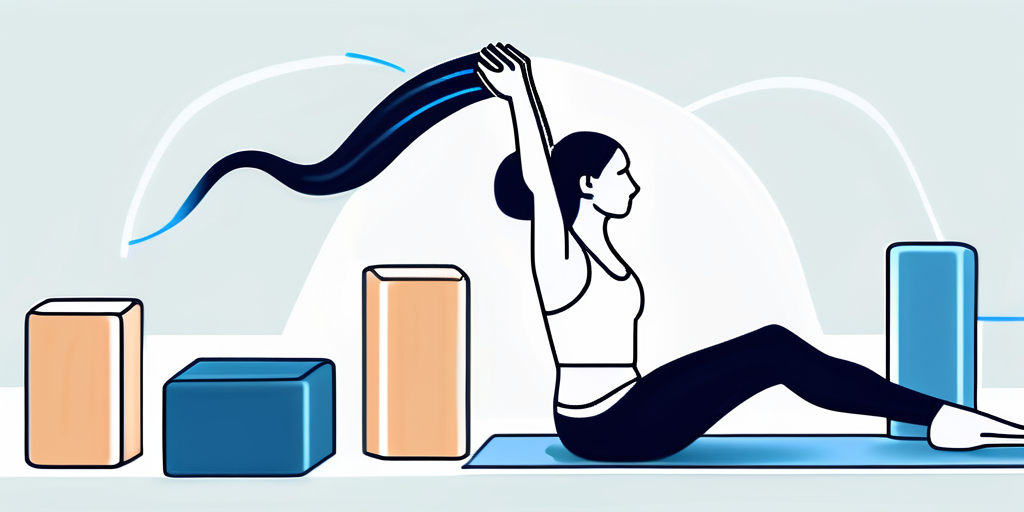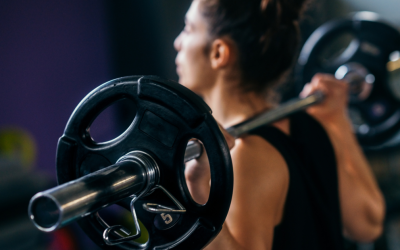Whether you’re an athlete, a fitness enthusiast, or someone looking to improve their workout routine, a dynamic warm-up is the key to getting your body ready for action. Gone are the days of simple stretches and static holds before a workout. A dynamic warm-up routine can help activate your muscles, increase blood flow, and improve overall performance.
This article will explore the benefits of a dynamic warm-up, discuss critical elements of an effective routine, and provide specific exercises to target different muscle groups. So, let’s dive in and discover how to take your warm-up to the next level!
Understanding the Benefits of a Dynamic Warm-Up
Before we create a dynamic warm-up routine, it’s essential to understand why it’s so beneficial. Unlike traditional warm-ups, which focus mainly on stretching, dynamic warm-ups involve active movements that mimic the actions you’ll be performing during your workout or activity.
One primary benefit of a dynamic warm-up is increased blood flow. As you move through dynamic exercises, your heart rate and circulation increase, delivering more oxygen and nutrients to your muscles. This prepares them for the upcoming physical demands and helps prevent injuries by promoting better mobility and flexibility.
Another advantage of a dynamic warm-up is enhanced muscle activation. By engaging various muscle groups through dynamic movements, you wake up those muscles and prepare them to perform at their best. This activation can help improve coordination, agility, and overall athletic performance.
Additionally, a dynamic warm-up routine can mentally prepare you for your workout. It gets you into the right mindset, boosting focus and concentration. This mental readiness can be as important as physical readiness for optimal performance.
Dynamic warm-ups have been shown to improve muscle elasticity. The dynamic movements performed during the warm-up help increase the range of motion in your joints and muscles, making them more pliable and less prone to strains or tears during exercise.
Furthermore, incorporating dynamic stretches into your warm-up routine can help improve your neuromuscular coordination. These stretches involve controlled movements that require communication between your muscles and nervous system, enhancing your body’s ability to perform complex movements precisely and efficiently.
Key Elements of an Effective Warm-Up Routine
Now that we understand the benefits let’s explore the critical elements of an effective dynamic warm-up routine. Structure and consistency are essential in creating an efficient warm-up addressing your needs. Here are three critical elements to consider:
1. Proper Movements for Your Activity
The first element is choosing exercises that are specific to your activity. If you’re a runner, include exercises that mimic the movements involved in running, such as lunges or high knees. For weightlifting, incorporate exercises that activate the muscles you’ll be working, like arm circles or squats. Tailoring your warm-up to your specific activity will provide the best preparation.
2. Gradual Increase in Intensity
Another critical element is gradually increasing the intensity of your warm-up. Begin with low-intensity movements to wake up your muscles and increase your heart rate slightly. Then, progressively increase the difficulty and speed of the exercises. This gradual increase in intensity helps prevent injuries and allows your body to adapt to the upcoming demands.
Remember, the goal is not to exhaust yourself during the warm-up but to gradually warm up your body and elevate your performance.
3. Dynamic Stretching and Mobility Exercises
Lastly, an effective warm-up routine should include dynamic stretching and mobility exercises. Dynamic stretches involve moving through a range of motion, as opposed to static stretches, where you hold a position for some time. Dynamic stretches like leg swings, arm circles, and torso rotations help improve joint mobility, flexibility, and overall body coordination.
Now that we understand the key elements let’s move on to the exercises that can help activate your muscles and prepare your body for action.
When choosing the proper movements for your activity, it’s essential to consider the specific muscles and joints involved. For example, if you’re a basketball player, incorporating exercises focusing on lateral movements, such as side lunges or lateral leg swings, can help improve your agility and quickness on the court.
Additionally, it is crucial to pay attention to your body’s needs and limitations. If you have any pre-existing injuries or areas of weakness, modify your warm-up routine accordingly. This might involve adding specific exercises or stretches targeting those areas or consulting with a physical therapist or trainer for personalized guidance.
As you gradually increase the intensity of your warm-up, it’s essential to listen to your body and adjust accordingly. If you start to feel any pain or discomfort, it’s a sign to dial back the intensity or modify the exercise. Remember, the warm-up should prepare your body for the upcoming activity, not push it to its limits.
Finally, when incorporating dynamic stretching and mobility exercises into your warm-up routine, it’s important to focus on proper form and technique. This will ensure you get the most out of each exercise and minimize the risk of injury. Take the time to learn the correct execution of each movement and pay attention to any cues or modifications provided by a qualified instructor or coach.
By following these key elements and paying attention to your body’s specific needs and activity, you can create an effective warm-up routine to set you up for success and help maximize your performance.
Dynamic Exercises for Full-Body Activation
To ensure a comprehensive warm-up that activates your entire body, it’s essential to include exercises that target different muscle groups. Let’s break it down by body regions:
Upper Body
Start with arm swings, gradually increasing the range of motion. Follow it up with shoulder rotations and chest openers. These exercises help warm up the muscles in your shoulders, chest, and arms, preparing them for upper body movements.
Another effective warm-up exercise for the upper body is the shoulder blade squeeze. This movement involves squeezing your shoulder blades together, which helps to activate the muscles in your upper back and improve posture. Additionally, incorporating dynamic movements like arm circles can enhance blood flow to the muscles, promoting flexibility and range of motion.
Lower Body
For the lower body, include exercises like leg swings, lunges, and high knees. Leg swings dynamically stretch the hip flexors and hamstrings. Lunges activate the glutes and quadriceps, while high knees engage the hip flexors and increase heart rate.
Consider incorporating lateral lunges to add more variety to your lower body warm-up. This exercise targets the inner and outer thighs and glutes, providing a well-rounded activation for the lower body muscles. Additionally, including calf raises can help warm up the calf muscles and improve ankle stability, which is beneficial for various activities like running and jumping.
Core
Activate your core with exercises like standing trunk rotations and dynamic planks. These movements engage the muscles in your abs, back, and obliques, enhancing stability and balance.
For a more dynamic core warm-up, you can include exercises like mountain climbers. This exercise targets the core muscles, increases heart rate, and improves overall coordination. Adding side plank variations can further engage the obliques and improve lateral stability, which is essential for twisting and turning activities.
Full Body
Incorporate exercises such as jumping jacks and burpees to involve multiple muscle groups simultaneously. These full-body exercises promote cardiovascular fitness and overall body coordination.
For a more challenging full-body warm-up, consider adding in squat jumps. This explosive movement activates the lower body muscles and engages the core and upper body as you propel yourself off the ground.
Dynamic movements like bear crawls can also activate the whole body, improving coordination and agility.
Remember, your specific exercises will depend on your activity or workout. The goal is to engage all major muscle groups while gradually increasing the intensity to prepare your body for the demands ahead.
How to Target Specific Muscle Groups
Now that we’ve covered exercises for full-body activation, let’s discuss how to target specific muscle groups during your warm-up routine.
If your workout focuses on upper body strength, include push-ups, arm circles, and chest stretches to activate the muscles in your chest, arms, and shoulders.
Alternatively, for lower-body workouts, target your glutes, quadriceps, and hamstrings with exercises like squats, leg swings, and hip circles.
If your routine includes core exercises, engage your abs, back, and obliques with movements like planks, Russian twists, and standing side bends.
By tailoring your warm-up to your specific muscle groups, you’ll ensure your body is prepared for the specific movements you’re about to perform.
Tips for Timing and Intensity in Warm-Ups
Timing and intensity are crucial factors to consider when planning your warm-up routine. Here are a few tips to help you optimize your warm-up:
Firstly, aim to spend 10-15 minutes on your warm-up. This timeframe allows for adequate muscle activation without exhausting you before your workout or activity.
In terms of intensity, start with low-intensity exercises and gradually increase the difficulty as you progress. Remember, the warm-up should not be the most challenging part of your workout. It should simply prepare your body for the demands ahead.
Listen to your body and adjust the warm-up intensity based on your feelings. Some days, you may need a longer warm-up or more gentle movement to get your body ready. On other days, you might feel more energized and ready to push yourself.
Lastly, don’t rush through your warm-up. Give each exercise proper attention and focus on the quality of movement. This mindfulness will help you get the most out of your warm-up routine.
Incorporating Mobility and Flexibility Drills
An effective warm-up routine should activate your muscles and improve mobility and flexibility. Here are some mobility and flexibility drills to consider incorporating:

Foam Rolling
Before your dynamic warm-up, spend a few minutes foam rolling major muscle groups like your calves, quadriceps, and back. Foam rolling helps release tension and increases blood flow to the muscles.
Dynamic Hip Openers
Exercise like leg swings and hip circles to warm up and open your hip joints. These movements improve hip mobility, which is essential for various activities like running, jumping, and squatting.
Active Stretching
Incorporate active stretches such as walking lunges, arm swings, and torso rotations into your warm-up routine. These stretches help warm up your muscles and improve flexibility and range of motion.
Joint Circles
Before starting your dynamic warm-up, perform joint circles to lubricate and warm up the joints. Include circles for your wrists, knees, ankles, and shoulders.
Incorporating mobility and flexibility drills into your warm-up routine can help promote better movement quality and overall athletic performance.
Let’s Craft A Winning Warm Up Routine
Creating a dynamic warm-up routine is essential for optimizing your performance and preventing injuries. By understanding the benefits of a dynamic warm-up, incorporating the key elements, and targeting specific muscle groups, you can create an effective warm-up routine that prepares your body for the demands ahead.

Remember to increase the intensity of your warm-up gradually, include exercises specific to your activity, and incorporate mobility and flexibility drills. Additionally, pay attention to timing and intensity and listen to your body’s cues during your warm-up.
These steps will set you up for success and ensure you’re ready to excel in your workout or activity. So go ahead, try out a dynamic warm-up routine, and experience the difference it can make in boosting your performance!



